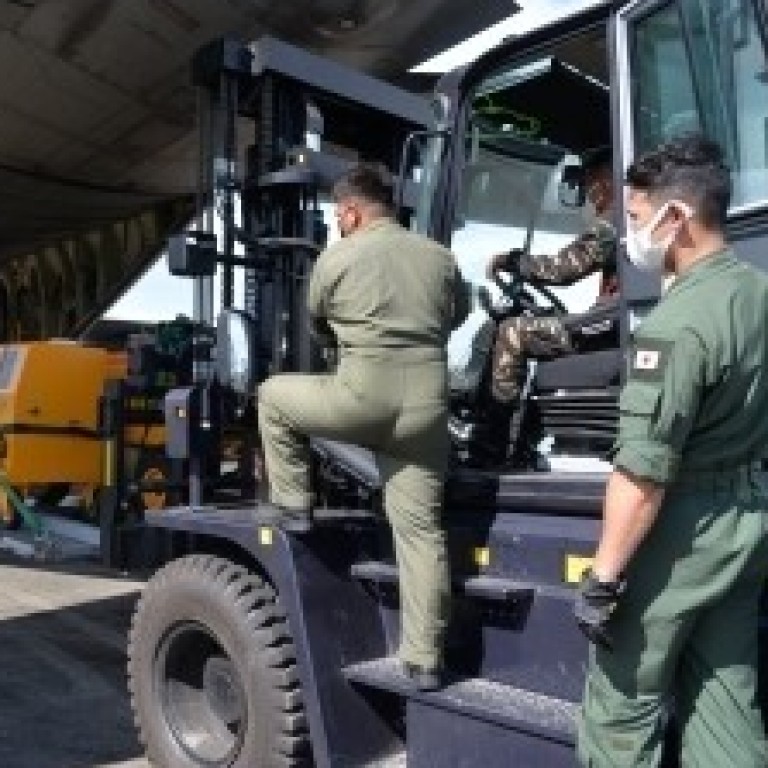
Could Philippines-Japan air force exercise herald Tokyo’s closer involvement in Southeast Asia?
- An analyst says such a prospect would have been ‘unthinkable’ two decades ago following Japan’s legacy of conquest and occupation in the region
- But Manila and Tokyo say the exercise is a sign of deepening defence ties – as they face pressure from an increasingly assertive Beijing
The four-day exercise that ended on Thursday saw teams from the Philippine Air Force and the Japan Air Self-Defense Force (JASDF) train for humanitarian and disaster relief operations at Clark Air Base north of Manila. Philippine Air Force spokesperson Lieutenant Colonel Maynard Mariano told This Week in Asia the activity was originally meant to feature in-flight training, with a 10-man JASDF team and a Philippine crew each flying a C-130 Hercules transport plane.
But this plan was scrapped after the July 4 crash of a C-130, the Philippines’ worst military air disaster since World War II, saw the local authorities ground all such aircraft. The activity was then turned into a series of tabletop exercises, which involved ground training as well as discussions and planning for a simulated emergency scenario.
Philippine military plane crash highlights country’s ageing, stretched equipment
According to the Japanese embassy in Manila, the activity was the first-ever joint exercise between the two air forces and a “further sign of deepening defence ties between the two countries”.
“Japan reiterates the importance of maintaining a free and open Indo-Pacific which is inclusive and based on the rule of law, democratic values, territorial integrity, transparency, and peaceful resolution of disputes,” the embassy said in a press release.

01:21
Military plane crash kills 47, injures 49 others in the southern Philippines
Custodio, a security specialist and non-resident fellow of the Manila-based think tank Stratbase ADR Institute, said Tokyo now had to face “head on” the fact that Beijing’s claims threatened Japan’s vital sea routes.
“They have to protect their sea lanes of communication, so they have to engage the world now,” he said, adding that Japan was not just working with the Philippine military, but providing a “full range of assistance” to Manila’s maritime and security agencies.
“For Japan, it’s all baby steps towards a much more active presence in the region,” he said. “Start with donating aircraft and ships; [then] you establish people-to-people contact. The next thing you know, [the Philippines is] hosting forces that will get bigger and bigger.”
Philippines has a secret weapon in its South China Sea tussle with Beijing: the female voice
Custodio said the goal of the Japanese was to operate “on the same tempo and level” in Southeast Asia as the United States. “But they have to deal with sensitivities around the region,” he said.
During World War II, Japan launched a brutal campaign against US, British, Dutch and Australian forces in the region that saw it occupy Hong Kong and all of Southeast Asia, with the exception of Thailand.
Japanese forces invaded the Philippines in 1941, bombing Manila and several US military bases. When the American army surrendered in March 1942, Japan occupied the country until the end of the war three years later; according to some estimates, up to 500,000 Filipinos died over this period.
“The air force of Japan is coming to assist us [now, but] 80 years ago, it came to the Philippines to bomb us,” Custodio said.
Clark Air Base, where the tabletop exercise was held, was not only bombed during the Japanese invasion – it was later the launching site for kamikaze suicide aircraft attacks against the US fleet.
Air Force spokesperson Mariano said of the exercise: “Isn’t it wonderful that those who were once enemies are now talking to each other?”


